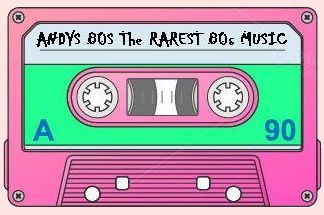New Wave emerged in the late 1970s as a reaction against the dominant sounds of punk rock and disco, offering a fresh, innovative approach to popular music. Characterized by its synthesiser-driven melodies, post-punk influences, and experimental production techniques, New Wave quickly became synonymous with the youth culture of the time, reflecting the era's fascination with technology, futurism, and artistic expression.
The genre's roots can be traced back to the late 1970s in the UK, where bands like The Jam, The Stranglers, and The Clash began incorporating elements of punk rock with more polished, melodic sensibilities. This fusion gave birth to a sound that was both raw and refined, appealing to a wide audience seeking something different from the mainstream. New Wave artists often experimented with unconventional instruments, such as electronic keyboards, drum machines, and synthesizers, creating a unique sonic landscape that set them apart from their contemporaries.
One of the defining features of New Wave is its emphasis on catchy, memorable melodies coupled with introspective or socially conscious lyrics. Bands like The Cure, Joy Division, and Siouxsie and the Banshees explored themes of alienation, urban decay, and emotional turmoil, resonating deeply with listeners who felt disconnected from the societal norms of the time. The music often had a dark, moody atmosphere, reflecting the existential angst of the era.
The visual aesthetic of New Wave was equally important, with artists often adopting androgynous styles, bold makeup, and avant-garde fashion choices. This emphasis on image and presentation was influenced by the art and design movements of the time, including punk's DIY ethos and the emerging club culture. The music videos and album artwork of New Wave bands were often as innovative and striking as the music itself, contributing to the genre's cultural impact.
New Wave spread rapidly across the Atlantic, gaining popularity in the United States through bands like Talking Heads, Blondie, and Devo. These artists brought their own unique interpretations to the genre, blending it with elements of funk, art rock, and experimental music. The result was a diverse and dynamic sound that continued to evolve throughout the 1980s.
The influence of New Wave can be felt in numerous modern genres, from synth-pop and electronic dance music to indie rock and alternative pop. Its legacy is evident in the work of artists like The Killers, Interpol, and M83, who continue to draw inspiration from the genre's innovative spirit and artistic vision. New Wave's enduring appeal lies in its ability to capture the zeitgeist of a particular moment in time while remaining relevant and influential decades later.
Some of the most iconic New Wave albums include "Remain in Light" by Talking Heads, which showcased the band's experimental approach to rhythm and texture; "The Queen Is Dead" by The Smiths, which combined jangly guitars with introspective lyrics; and "Low" by David Bowie, which featured minimalist arrangements and haunting vocals. These albums, among many others, have become seminal works in the genre, influencing generations of musicians and fans alike.
In conclusion, New Wave represents a pivotal moment in the history of popular music, blending elements of punk rock, art rock, and electronic experimentation to create a sound that was both innovative and accessible. Its impact on fashion, visual arts, and cultural trends is undeniable, making it one of the most influential genres of the late 20th century. Whether through its groundbreaking albums or its enduring influence on modern music, New Wave continues to inspire and captivate audiences around the world.
 1.2k
1.2k
 1
Ukraine, Kyiv New wave
1
Ukraine, Kyiv New wave Andys 80sAndys 80s
Andys 80sAndys 80s 952
Netherlands New wave 128 kbps MP3
952
Netherlands New wave 128 kbps MP3












